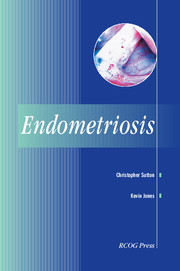Introduction
Published online by Cambridge University Press: 05 February 2014
Summary
Endometriosis is an increasingly common gynaecological disorder, confined to women of a reproductive age and limited to Homo sapiens and the higher primates. It would appear that an erect posture, although providing advantages in evolutionary terms for defence, hunting and the acquisition of food, also has a disadvantage: under the influence of gravity, an erect posture allows viable endometrial cells that pass through the fallopian tubes during retrograde menstruation to implant in the deeper areas of the female pelvis.
It is a disease that affects a huge number of women throughout the world, and it has been estimated that between 1% and 15% of women who are examined for pelvic pain and infertility may have endometriosis. This is almost certainly an underestimate; the prevalence of the disease quoted in the medical literature ranges between 6% and 45%.
The main problem in trying to estimate the true prevalence of this disease is that the diagnosis can only be made with any accuracy by laparoscopic examination of the pelvis. This specialist procedure is only performed on patients who are referred by their general practitioners (GPs) with dysmenorrhoea, dyspareunia, pelvic pain or infertility. However, a great proportion of women regards many of these symptoms as part of ‘a woman's lot in life’, and many GPs unfortunately react in a similar way, prescribing increasingly stronger painkillers and multiple courses of antibiotics, in the often mistaken belief that pelvic inflammatory disease is the underlying problem. Thus, the time from the first consultation with typical symptoms to the actual establishment of the diagnosis is of the order of seven years.
- Type
- Chapter
- Information
- Endometriosis , pp. v - viPublisher: Cambridge University PressPrint publication year: 2004



